
What could be more inspiring for therapists than an amazing physical therapy patient success story? Well, I have one such story and a former patient of mine who kindly agreed to let me share it.
The Accident
Patti Morrow is a travel writer and creator of Lipstick and Luggage, an award-winning travel guide and blog. In May of 2014 Patti, at the age of 56, was on an assignment in South Africa. Her brother, Steve, had joined her for this trip.
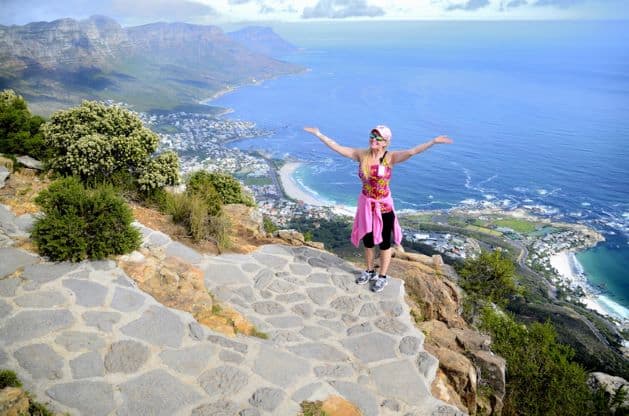
Early in their trip, Patti and Steve hiked Lion’s Head mountain, overlookng all of Cape Town. The next day, excited to continue the adventure, the pair were on their way to a safari. But it was not to be.
Partway through the 2-hour drive, their car was T-boned on the passenger side where Patti was sitting. The ‘Jaws of Life’ was used to extract her.
Her injuries were extensive and critical. A tear in the diaphragm allowed the abdominal contents to herniate into the thoracic cavity. Patti also sustained a femur fracture, six pelvic fractures, a collapsed left lung, a broken clavicle, a right wrist fracture, and multiple sprains, bruises, cuts, and bumps. There was also neck pain and headaches.
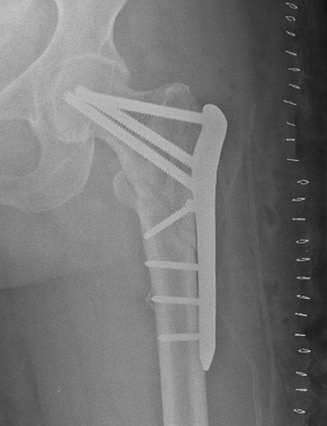
The Hospital
Patti was taken to the local hospital where she underwent surgery to repair her diaphragm and fixate her broken femur. Both procedures went well.
But because of the pelvic fractures, Patti had to lie supine for six weeks to allow for proper healing. Unfortunately, a stretcher flight back to the United States was not in the cards, so Patti spent those weeks in a small hospital in South Africa. She did receive some physical therapy while she was there, and Steve, who was unhurt in the accident, stayed with her throughout it all.
I know that access to physical therapy around the world can be limited. Any feedback on healthcare in South Africa as compared to the United States?
OMG, I don’t even know where to start. The hospital experience in South Africa was horrendous! I felt like I was back in Victorian England and that they were going to bleed me next. I have a lot of horror stories, many too graphic to list here.
I was in a group room where all the other patients were moved in and out every day. I was the only long-term patient. It was constant chaos, noise, and lights. I could not get any sleep, which was negatively impacting my recovery. My surgeon finally got me moved to a private room, one of only four in the whole hospital. That was a lot better.
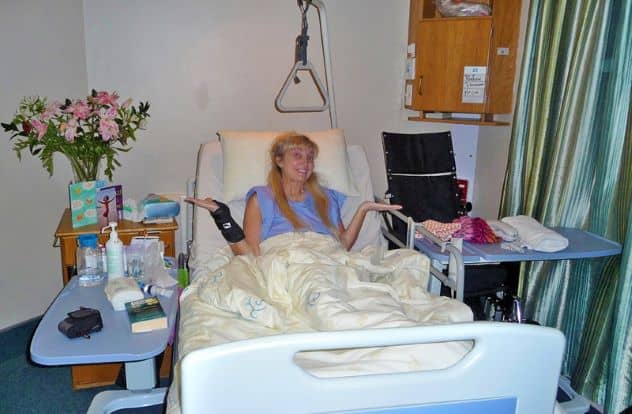
The equipment was constantly malfunctioning, like the boot they put on my foot so I wouldn’t get a blood clot. It would beep all night long. They changed it several times, but they were all faulty.
I had four great nurses, the rest were terrible. Fortunately, my surgeon was wonderful. He had trained in the US, so he had the skills- plus a fantastic bedside manner. He tried so hard to get me on a stretcher flight back to the US, to no avail.
I was never so glad to get back to US soil again.
How was the flight from South Africa to the US? I imagine it being so uncomfortable, but maybe it wasn’t so bad because you were so happy to come home!
I flew back first class on British Air because I needed to be upright for takeoff and landing but then could lay back for the rest of the flight. The flight attendants could not have been nicer and more attentive.
The hardest part was getting from my wheelchair onto the plane because I had to walk. I was so unsure of myself with my crutches and had only used them a few times. But luckily, my private cubicle was very close to the door so I did so without incident.
It was also right next to the restroom, which was also convenient. Using bathrooms was already difficult. I had to put a riser on the toilet and could not attach it because of course other people had to use the bathroom. Actually, if I remember correctly, I think I did not use the bathroom the whole flight.
I slept through most of the flight on a pretty comfortable bed. My brother was in the cubicle next to me and made sure I was okay throughout the flight.
The Rehabilitation
Upon returning to the US, Patti was taken to a hospital in Rhode Island.
I was there for three days while they did testing to make sure the procedures they did in South Africa were up to par. They would not release me until I proved I could walk with a walker down the hall and into another room where there were a few stairs that I had to climb with my crutches. It was brutal! I felt like I was going to pass out and barely could do the stairs, but I was determined to get out of there.
I went to my brother’s house from there and stayed with him until I returned to [my home in South Carolina].
Here is where our paths crossed. Patti started coming to see me for physical therapy at an outpatient clinic in Rhode Island until she was able to return home. A family friend transported her to her visits.
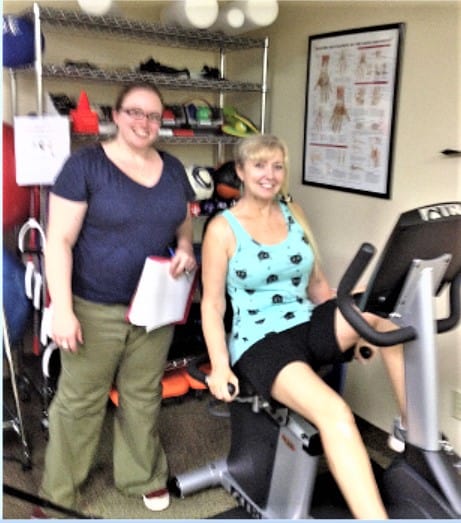
Do you remember how long we worked together?
I think it was a couple of months. The orthopedic surgeon overseeing my recovery in South Carolina said he would release me to return there as soon as I could put all my weight on my injured leg so that I could drive. In fact, I booked my flight before my last visit because I was determined to get home. You were probably involved in helping me achieve that!

Tell me about your experience with physical therapy in SC. How long were you treated? Were you always motivated, or were some days a struggle?
Like my physical therapy experiences in South Africa and RI, my PT experience in SC was also fantastic. I went for several months, strengthening my leg, hip, and lung capacity/endurance. I did water therapy too. PT was never easy, but it was always beneficial and I could see the improvement.
I was always motivated. I loved my life of travel before the accident, and I was not ready to let go of that. Plus, I felt so blessed to be alive, and that I had not incurred a brain or spinal injury that surely would have changed my life. Gratitude is very motivational. I did have a limp for years, and even now, my walk is different than it was pre-accident.
How close are you to your physical ability as compared to before the accident? Do you have any lingering pain, limitations, or symptoms? If so, how do you manage them?
I am currently at about 90-95% of where I was before the accident. I don’t think it will get better than that. I can do almost everything I could do before, just a little slower (e.g. hiking). I did take bungee jumping off my bucket list, but other than that, I’m still adventure-oriented and do far more than any other 65-year-old that I know. Come to think of it, I do more than others who are way younger than me.
The one thing that I have difficulty with is climbing stairs, whether indoors or during a hike. If I try to lead with my left leg, it’s extremely difficult to haul my weight up, and depending on the height of the step, my leg collapses.
Any thoughts, advice, or insights for either other patients who have experienced similar trauma or the physical therapists that treat them?
Physical therapy was a lifesaver for me. I had three different teams: South Africa, RI, and SC. They were all terrific and helped me a lot.
Having a support team of family and friends is essential to getting over the trauma. I had PTSD (post-traumatic stress disorder) for a long time, and in fact, still have it when I am a passenger in someone else’s car. That’s unlikely to go away.
The Success
When was your first travel after the accident? Where did you go?
My first travel came when I was invited to speak at a travel conference in San Diego that very September, just four months after the accident. I immediately said yes, not even thinking about logistics.
It was extremely difficult as I still had a lot of pain just trying to walk, and I could not walk very far. I had to be transported in a wheelchair around the airports. I used both my crutches and my cane at the conference. It was such a boost, though! Nearly everyone at the conference had been following my journey and I was received with such an outpouring of love!
How much travel do you do now? Tell me about some of your adventures.
I do a lot of traveling now, even more than before the accident. I’ve set foot on six continents (all except Antarctica) since 2014.
Two adventures came to mind immediately…
First, about a year after my accident (2015), I went to Bali. Getting my scuba diving certification was something that was always on my bucket list, but I hadn’t thought about it for a while. While in Bali, I decided spontaneously to do it. I had to study for a written test as well as some physical dives. I passed everything and felt like it was a huge accomplishment, more so because it was only a year since nearly dying and having to learn to walk again.
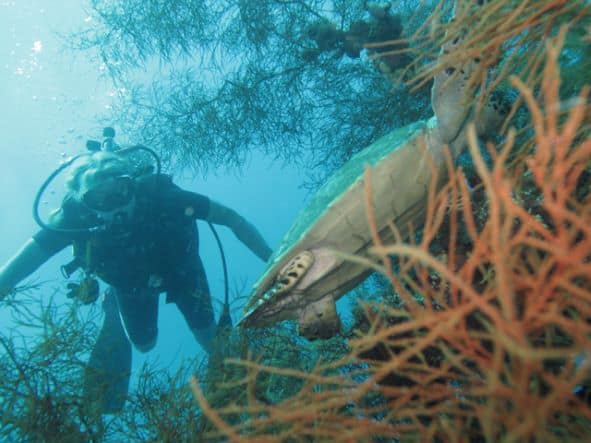
Second, last October (2021), I did the scariest hike ever in Jordan. I hiked through Wadi Mujib, a thrilling 4-hour hike through a rushing river in the middle of a gorgeous slot canyon, rock climbing, swimming, several waterfalls, water slides, and culminating at a beautiful double-waterfall. It was positively frightening, and I didn’t see anyone my age attempting it. To this day, I can’t believe I did it!
Two other highlights were my trip to Peru in 2017, and my Kenya safari in 2021 – both were spectacular!
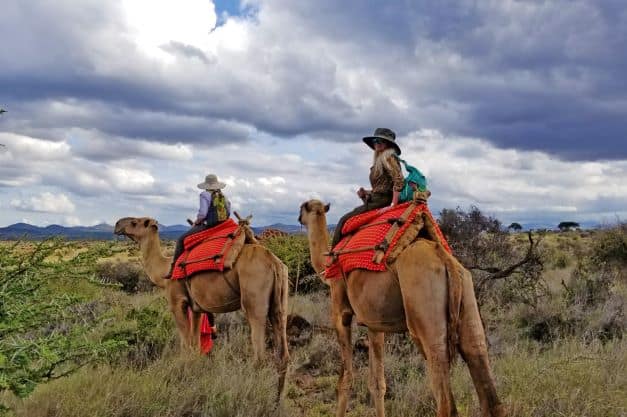
Patti has a truly inspiring physical therapy success story! While I think most of her amazing outcomes are a result of her own determination, her story makes me want to always do everything I can to help my patients achieve their goals. I hope she can do the same for you.
Additional Resource: Recovering Physically and Mentally from a Car Accident

Recent Comments